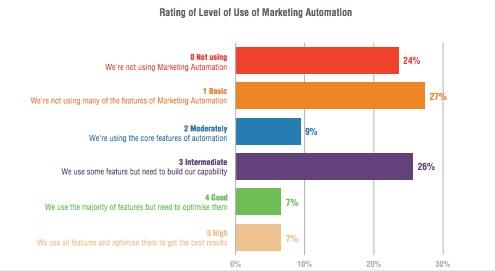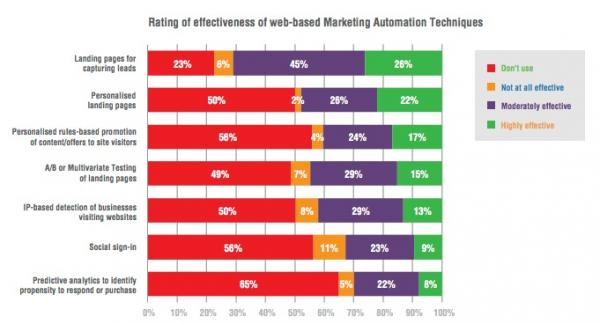
5 Marketing Trends To Include In Your 2016 Strategy
Which marketing trends need to be a part of your 2016 digital marketing strategy? These five are the ones to focus on.
Marketers have a big job trying to keep up with the ever-changing, ever-growing landscape of trends, technologies, tools, and platforms. They are continually challenged to deliver more with less and faster so identifying which marketing strategies will have the biggest impact on their business in the coming year is a must in order to create digital marketing plans that deliver. With that in mind, here are five trends (some you’ve definitely heard of before and some you’ll need to get familiar with quickly) you need to know about going into 2016:
Real-Time Website Personalization
Consumers are bombarded with an overwhelming number of marketing messages in their daily travels, making it increasingly difficult for marketers to cut through the clutter. But, when marketers find ways to speak directly to the customer and address their specific wants and needs by delivering relevant content, there’s a direct (and positive) impact on revenue. By using real-time website personalization to shift the messaging focus toward the customer, marketers can create unique experiences that more effectively engage website visitors. Though it has been around a while, personalization hasn’t been widely adopted due to high cost and challenges with implementation, however those barriers are no longer factors as costs have decreased, availability of tools has increased, and various solutions have made it easier to incorporate on websites. As marketers are becoming more desperate to command the attention of their prospects and personalization becomes easier to implement, you can expect to see the number of websites catering their user experience toward the individual visitor explode.
Mobile
You’re probably thinking “what!?!?” since mobile has been a fixture for some time now, but we’re expecting its complete domination in the coming year. So, if you’re still viewing mobile as just a part of your marketing strategy, it’s time to adjust your thinking and consider mobile as your marketing strategy. You may recall Google making a modification to its search algorithms back in April, resulting in a major change to the way the search engine ranks websites. Meaning, if your site isn’t mobile-friendly, it will appear lower in search results than those that are. And let’s be honest, with so many of your site visitors now using mobile devices to view your website, offering a less than great user experience on mobile just won’t cut it. Mobile is no longer secondary to desktop when it comes to digital marketing, and the coming year will have marketers making it the highest priority.
Location-Based Marketing
After Apple introduced their location-tracking service, iBeacon, at the 2013 Developer Conference, it seemed like the number of businesses and providers with a similar product and solution exploded overnight. Since then, the technology has been adopted by major brands including American Eagle, Major League Baseball, and McDonald’s. And why not? Over and over, it’s helped to drive sales and increase revenue. Between its low implementation cost and high return on investment, proximity marketing will be getting a lot more attention in the coming year from marketers who want to reach customers at the most opportunistic time. There are countless ways to use location-based marketing, from providing special offers to offering enhanced customer service, making it a versatile tool in the marketing mix. But, there are some issues marketers will have to resolve before they jump into proximity marketing. These include:
-
Bad User Experience – Marketers need to be thoughtful in their implementation in order to ensure they aren’t creating interactions that feel intrusive and spammy.
-
App Downloads – Perhaps the trickiest part about location-based marketing is getting users to download the app necessary to receive messages. The onus is on marketers to create a compelling reason for users to adopt the technology.
-
Battery Life – Proximity marketing devices rely on Bluetooth, a feature that tends to get disabled on mobile phones as a battery life saving measure. If consumers are disabling Bluetooth, they’re essentially turning off the location based marketing experience.
Customer Journey Mapping
You may have noticed a slow but steady change brewing in how marketers market to prospects. We’ve been seeing a shift toward creating marketing programs that are truly focused on the customer rather than the business and anticipate an even larger groundswell behind this movement in the coming year. And it all starts with customer journey mapping. Armed with a better understanding of and methodologies to analyze customer data, marketers are now better equipped than ever to map their customer’s experience at every touch point in order to design messaging, communications, and other outreach that deepens the relationship. Knowing the customer journey inside and out is the cornerstone of establishing meaningful engagement with prospects and clients, and is the first step in implementing the last trend on our list....
Marketing Automation
Lots of companies are already using marketing automation, however they’ll be the first to admit they are totally underutilizing it, leaving the door wide-open for more sophisticated implementations that result in an increased return on investment.

In 2016, businesses that have been keeping marketing automation tools out of their mix will embrace them in order to capitalize on their ability to build and measure engagement, and turn prospects to customers. Those that are already using marketing automation will go deeper into its capabilities and employ it for more complex uses from personalization to predictive analytics as these techniques have shown themselves to be highly effective.

What 2016 Is Really About
You probably couldn’t help but notice that these trends have a common theme – the customer. More than any other year, 2016 will have marketers shifting their focus toward finding more effective ways to meaningfully connect with the customer. Not only has that proven to lead to more successful long-term engagement, but it’s also better for the bottom line. And that’s something marketers are more accountable to than ever.